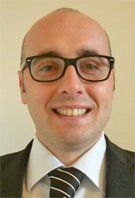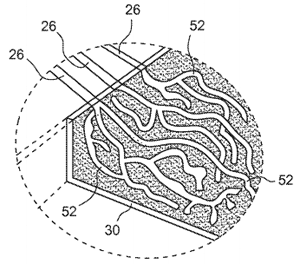 The Phase Change Matters e-mail newsletter is a weekly summary of the latest news and research on phase change materials and thermal energy storage. To subscribe, visit www.puretemp.com/subscribe. For more frequent updates, follow @puretemp on Twitter or visit the Phase Change Matters blog, www.puretemp.com/pcmatters.
The Phase Change Matters e-mail newsletter is a weekly summary of the latest news and research on phase change materials and thermal energy storage. To subscribe, visit www.puretemp.com/subscribe. For more frequent updates, follow @puretemp on Twitter or visit the Phase Change Matters blog, www.puretemp.com/pcmatters.
ENERGY STORAGE
More on Sunamp’s power plant project in China
Sunamp Ltd. announced last month that it is teaming up with Glasgow University and partners in China to boost the performance of Organic Rankine Cycle power plants that use renewable heat sources for distributed heat and power supply in China. The Scottish company’s PCM heat batteries will be integrated with ORC plants to store heat energy for power generation when the sun doesn’t shine. I asked Maurizio Zaglio, Sunamp’s international business development manager, for more information on the project.
 Q: Is the project a result of Sunamp’s visit to China last year?
Q: Is the project a result of Sunamp’s visit to China last year?
A: Not directly, but they are all part of our strategy to develop the Chinese market. Since about 2015 we have started various activities in the area, with the strong support of the UK and Scottish governments, in order to assess the market and the best way to access it. This project gives us a great opportunity to install a pilot system based on our Heat Batteries in China, that we will use as demonstrator as well as to further develop our relationship with local players.
Q: Will Sunamp adapt one of its existing systems – or develop an entirely new system?
A: In the project we plan to use two storages at different temperatures, both based on our inorganic PCM developed in collaboration with the University of Edinburgh’s School of Chemistry: one below 100°C that will be based on our existing system, and one above 100°C that is at an advanced stage of development and will be ready to be installed in the pilot system at beginning of 2018.
Q: Has Sunamp worked with ORC systems previously?
A: No, despite having worked with numerous systems like solar PV, solar thermal, mCHP (micro-combined heat and power), and heat pumps, we have never had the opportunity to work with ORC before. We expect to gain a lot of experience during this project by working with our UK and overseas partners that are really expert in this field.
Q: Do you expect to hire additional staff in connection with the project?
A: As mentioned before, this project is part of a larger strategy to develop the Chinese market. So, even if no new hires are explicitly planned for this project, we expect to set up a team dedicated to China and partially based on China between the end of 2017 and the beginning of 2018.
Sunamp CEO Andrew Bissell, meanwhile, is wrapping up a 10-day visit to China with an informal kickoff of the project Saturday in Beijing.
“China is a market where we can have huge impact,” Bissell said in a LinkedIn post. “In the dense urban cores the compact nature of Sunamp Heat Batteries (for hot water, for cooling, for solar energy) makes a huge difference. And it’s a market with scale. If you are on a mission to push back climate change, the large-population countries give you the best opportunities.”
PATENTS
Thermal management system with PCM
U.S. patent application 20170067693 (General Electric Co., Schenectady, N.Y.):
 “A thermal management system including a first vapor housing configured to receive a fluid that absorbs thermal energy from a first heat source, and a phase change material (PCM) housing thermally coupled to the first vapor housing, wherein the PCM housing is configured to receive a PCM that absorbs thermal energy from the first vapor housing, wherein the first vapor housing and the PCM housing are one-piece. … As illustrated, the vascular network includes a plurality of conduits or passageways [52] that may vary in size, length, orientation, etc. throughout the PCM housing [30].”
“A thermal management system including a first vapor housing configured to receive a fluid that absorbs thermal energy from a first heat source, and a phase change material (PCM) housing thermally coupled to the first vapor housing, wherein the PCM housing is configured to receive a PCM that absorbs thermal energy from the first vapor housing, wherein the first vapor housing and the PCM housing are one-piece. … As illustrated, the vascular network includes a plurality of conduits or passageways [52] that may vary in size, length, orientation, etc. throughout the PCM housing [30].”
Methods for making low remnant free formaldehyde microcapsules
U.S. patent application 20170065956 (applicant Microtek Laboratories Inc., Dayton, Ohio):
“Methods for producing microcapsules begin by preparing an emulsion of a surfactant, core material, and water, followed by the addition of a crosslinking agent and a melamine formaldehyde prepolymer, which is subsequently polymerized. The crosslinking agent is added before the melamine formaldehyde prepolymer, with a first addition or a second addition of a melamine formaldehyde prepolymer, or is divided for addition with both a first addition and a second addition of melamine formaldehyde prepolymer.”
IN BRIEF
• In a LinkedIn post, the chemicals giant Sasol has announced the development of a new phase change material, Parafol 17. The product has a melting range of 20-22º Celsius. Potential applications include building/construction and the transportation of temperature-sensitive goods. The company says the new PCM is commercially available, but it is not yet listed on the company’s websites.
• CIC Energigune is seeking candidates for the position of scientific director in its energy storage group, which is focused on the research of systems that can store heat from medium to high temperatures. The research center, based in Spain’s Basque Country, also has a leadership opening in the TES group’s device, prototype and testing area.
• Want to learn how your company can include sustainability in its business goals? Stanford University‘s Center for Professional Development is offering a free webinar, “The Pursuit of Sustainability,” at 11 a.m. Pacific time March 14.
• GreenCE is offering an online course titled “Inspiration Green: Biomimicry, Climate & Culture.” The course, sponsored by T. Stern Sustainability of Seattle, will cover strategies used in high-performance buildings to reduce environmental impact and earn LEED credits. The cost: $35.
• New from Transparency Market Research: “1-Tetradecanol Market – Global Industry Analysis and Forecast 2024“
• Sonoco ThermoSafe has posted the results of an industry survey on the “current and future state” of clinical trial supplies. Half of those surveyed said they planned to adopt new supply chain technology within the next two years.
• BASF Group opened its Innovation Campus Asia Pacific in Mumbai this week, dramatically expanding its research and development presence in India. BASF expects to invest 50 million euros in the campus, making it the company’s largest R&D investment in South Asia. BASF Venture Capital, meanwhile, is investing in the U.S. renewable chemistry firm P2 Science.
• The heating and cooling technology company Viessmann and the food retailer Aldi Nord have developed a new cooling and heating system that employs propane heat pumps, photovoltaics and ice storage. The ESyCool system, designed to reduce energy costs by 15 percent and reduce life-cycle costs, will be installed in 10 Aldi Nord stores in Germany.
• Registration is open for the 2017 New Product Development and Innovation in the Chemical Industry summit, to be held April 26-27 in Berlin. Speakers include Stephan Altmann, head of innovation excellence at BASF, and Olivier Magnin, technology director for Europe, the Middle East and Africa at DuPont Performance Materials.
RESEARCH ROUNDUP
For our full list of recent academic research, see puretemp.com/academic. Here are highlights from the past week:
From International Journal of Heat and Mass Transfer:• Experimental study on effective thermal conductivity of microcapsules based phase change composites
From Renewable and Sustainable Energy Reviews:
• Review of cooling techniques using phase change materials for enhancing efficiency of photovoltaic power systems
From Energy and Buildings:
• Enhanced thermal performance and study the influence of sub cooling on activated carbon dispersed eutectic PCM for cold storage applications
From Journal of Thermophysics and Heat Transfer:
• Aluminum Mesh and Phase-Change Characteristics of n-Octadecane for Thermal Energy Storage
From Polymer Degradation and Stability:
• Analysis of graphene-encapsulated polymer microcapsules with superior thermal and storage stability behavior
From Nano Energy:
• Cellulose nanofibers enable paraffin encapsulation and the formation of stable thermal regulation nanocomposites
From Applied Energy:
• Experimental and numerical investigations on the thermal performance of building plane containing CaCl2·6H2O/expanded graphite composite phase change material
From Fibers and Polymers:
• Fabrication and characterization of porous cellulose acetate films by breath figure incorporated with capric acid as form-stable phase change materials for storing/retrieving thermal energy
From Renewable Energy:
• In-situ preparation of a shape stable phase change material
From 2017 International Conference on Communication, Control, Computing and Electronics Engineering:
• Buildings cooling: An experimental study of phase change materials storage for low-energy buildings
NETWORKING
Connect with PCM experts and industry leaders on LinkedIn
More than a thousand of your peers have joined a LinkedIn group devoted to the discussion of phase change material and thermal energy storage. The Phase Change Matters group is an interactive complement to the award-winning blog and newsletter of the same name.
 You are invited to join the group and connect with PCM and TES experts from around the world. New members this week include Swanand Bhagwat, a postdoctoral research associate at Drexel University, Philadelphia, Penn.; Sandrine Hingrez, energy engineer at Climatique, Lyon, France; Prasad Komerwar, senior analyst at MarketsandMarkets, Pune, India; and Dirk Schär, marketing and sales specialties manager at Sasol Germany GmbH.
You are invited to join the group and connect with PCM and TES experts from around the world. New members this week include Swanand Bhagwat, a postdoctoral research associate at Drexel University, Philadelphia, Penn.; Sandrine Hingrez, energy engineer at Climatique, Lyon, France; Prasad Komerwar, senior analyst at MarketsandMarkets, Pune, India; and Dirk Schär, marketing and sales specialties manager at Sasol Germany GmbH.